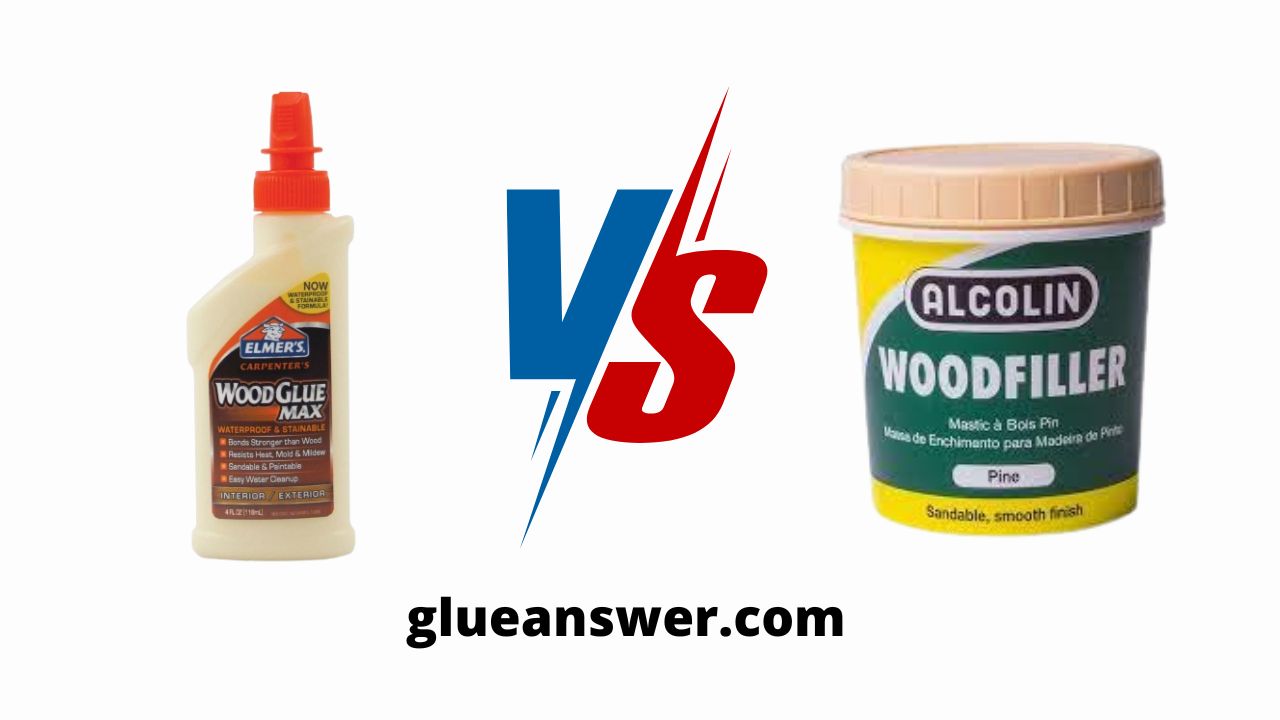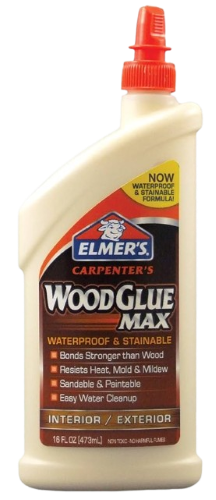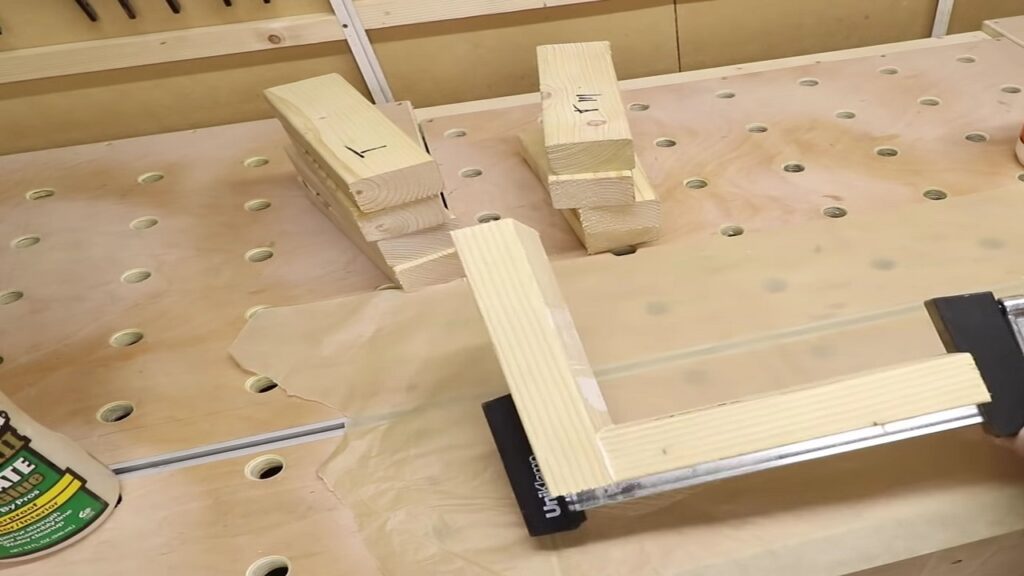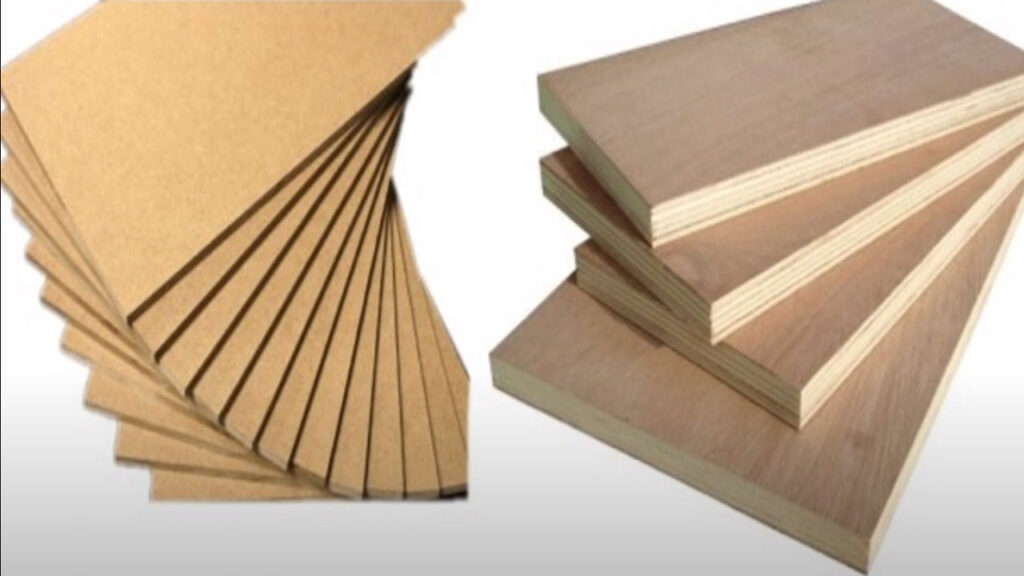Wood Glue Vs Wood Filler: Sturdy Joints or Seamless Surfaces

Wood glue is an adhesive used to bond wood joints, cracks, and small gaps, while wood filler is a material used to fill large gaps, holes, and surface imperfections.
Wood glue and wood filler are not the same. And here is the debate of wood glue vs wood filler. Because it’s hard to know when to use which one.
To know more about these two strong adhesives, keep reading.
Wood Glue Vs Wood Filler: Key Differences
Here’s a table outlining the main differences between wood glue and wood filler:
| Criteria | Wood Glue | Wood Filler |
| Purpose | Bonds pieces of wood together permanently | Fills gaps, holes, and cracks in wood |
| Composition | Liquid adhesive | Wood dus and binders |
| Adhesion | Creates a strong, permanent bond | Provides a solid, but not necessarily permanent bond |
| Color | Typically dries clear or translucent | Available in various colors, often designed to match wood |
| Curing Time | 30 to 60 minutes | 2-8 hours |
| Sandability | Not generally sandable | Sandable after drying |
What Is Wood Glue Used For?
- Bonding wood surfaces: Wood glue is primarily used for joining pieces of wood together.
- Furniture assembly: It’s commonly used in assembling furniture to create strong and durable joints.
- Carpentry projects: Woodworkers use glue to enhance the structural integrity of their creations.
- Repairs: Ideal for fixing broken wooden items.
- Versatile: Bonds various wood types effectively.

What Is Wood Glue Made Of?
Wood glue is commonly made of polyvinyl acetate homopolymer (PVA), a synthetic polymer. PVA glues are popular for their strong bonding properties, ease of use, and versatility.
Types Of Wood Glue
Here are some common types of wood glue:
- PVA Glue (Polyvinyl Acetate): Suitable for general woodworking projects. It dries clear and is easy to sand.
- Epoxy Resin: Comes in two parts that need to be mixed before application.
- Cyanoacrylate (CA) Glue: Also known as “super glue” or “instant glue.” Bonds quickly and is suitable for small, precise applications.
- Not ideal for large woodworking projects due to its brittleness.
- Hide Glue: Derived from animal collagen, typically from hides. Available in liquid or granular form.
- Hot Melt Glue: Comes in stick form and is applied using a hot glue gun. Sets quickly and is suitable for temporary or lightweight bonding.
How Long Does Wood Glue Last?
Wood glue typically has a shelf life of one to two years.
What Is The Advantage Of Wood Glue?
- Strong Bond: Wood glue creates a durable and robust bond between wood pieces.
- Versatility: Suitable for various wood types and applications.
- Easy Application: Liquid consistency allows for easy spreading and application.
- Fast Drying: Many wood glues have a relatively quick drying time, speeding up the assembly process.
- Sandable and Paintable: Glued joints can be sanded and painted after drying.
- Cost-Effective: Generally an affordable option for woodworking projects.
What Are The Disadvantages Of Wood Glue?
- Drying Time: It typically requires sufficient drying time, which can be a disadvantage when quick bonding is needed.
- Moisture Sensitivity: Wood glue can be sensitive to moisture during the curing process.
- Not Suitable for All Materials: It is specifically designed for wood and may not adhere well to other materials.
- Limited Temperature Resistance: Some wood glues may not withstand extreme temperatures well.
Can I Add Water To Wood Glue?
Yes, you can add a small amount of water, typically up to 10%, to wood glue to adjust its consistency. However, exceeding this ratio may compromise the adhesive properties of the glue.
How Much Wood Glue To Use?
A general guideline for wood glue is to apply a thin, even layer on both surfaces to be joined. Using too much can weaken the bond, so a moderate amount is sufficient.
How Thick Is Wood Glue?
Wood glue typically has a thickness ranging from 0.13 to 0.18 millimeters. It is a relatively thin liquid that is applied to surfaces before joining them together to create a strong bond.
How Powerful Is Wood Glue?
Wood glue is a powerful adhesive, typically offering a bond strength of 3,600 to 4,000 pounds per square inch (psi). This makes it effective for joining wood components securely.

Why Is Wood Glue So Weak?
Wood glue is not inherently weak, but its strength can vary based on factors such as application, type of wood, and proper bonding conditions.
How Do You Remove Wood Glue?
Removing wood glue depends on whether it’s still wet or has already dried. Here are steps for both scenarios:
1. If The Wood Glue Is Still Wet
- Wipe off excess glue: Use a clean, damp cloth or sponge to wipe away as much wet glue as possible. Be careful not to spread it around.
- Use vinegar or water: Dampen a cloth with white vinegar or warm water and gently rub the glue. This can help soften the glue, making it easier to wipe away.
- Scrape off with a putty knife: If the glue is still soft, use a putty knife or a similar tool to gently scrape off the remaining glue. Be cautious not to damage the wood surface.
- Clean the area: Once the glue is removed, clean the wood surface with a damp cloth to ensure no residue is left behind.
2. If The Wood Glue Has Dried
- Scrape off excess glue: Use a putty knife, chisel, or scraper to carefully scrape off as much dried glue as possible.
- Heat the glue: Use a heat gun or a hairdryer to apply heat to the dried glue. Heat can soften the glue and make it easier to scrape away. Keep the heat at a moderate level to avoid damaging the wood.
- Use vinegar or acetone: Apply white vinegar or acetone to the dried glue. Let it sit for a few minutes to penetrate and loosen the glue. Then, scrape it away with a putty knife.
- Sand the area: After removing the glue, you may need to sand the wood surface to smooth out any remaining residue or imperfections.
When Should You Not Use Wood Glue?
Here are some scenarios where you should consider alternatives to wood glue:
- Outdoor applications: Standard wood glue is not designed to withstand exposure to the elements.
- High-temperature environments: Wood glue can soften and lose its bonding strength at elevated temperatures.
- Gap-filling: It is not an effective gap-filling adhesive.
- Certain hardwoods and oily woods: Some hardwoods, like teak and rosewood, contain natural oils that can interfere with the bonding ability of wood glue.
- Non-porous surfaces: Wood glue is designed for porous materials, and it may not adhere well to non-porous surfaces.
- Quick-setting requirements: Wood glue typically requires some clamp time and adequate drying time to achieve maximum strength.
How Do You Make Wood Glue?
To make wood glue, combine equal parts of water and cornstarch in a saucepan. Heat and stir the mixture until it thickens. Let it cool before using.
This simple DIY glue is non-toxic and suitable for basic woodworking projects, but commercial wood glues offer stronger and more reliable bonds.
What Type Of Filler Is Best For Wood?
Epoxy resin wood filler is often considered a reliable choice for wood repair. It provides strong adhesion, durability, and resistance to moisture. Additionally, it can be easily sanded and painted.
What Is Wood Filler Used For?
- Repairing Wood Surfaces: Fills gaps, cracks, and holes in wood.
- Smoothing Imperfections: Levels uneven surfaces for a smooth finish.
- Enhancing Durability: Reinforces weakened or damaged wood.
- Preventing Moisture Damage: Seals gaps to protect against moisture penetration.
- Improving Aesthetics: Provides a seamless appearance by hiding blemishes.
- Facilitating Finishing: Allows for better stain and paint adherence.
- Restoring Structural Integrity: Strengthens weakened areas in wooden structures.

Read More Wood Glue Vs Super Glue: Composition, Bonding Properties & More
What Is The Difference Between Wood Putty And Wood Filler?
Here’s a table summarizing the key differences:
| Feature | Wood Putty | Wood Filler |
| Purpose | Minor repairs on finished wood | Filling gaps and cracks in unfinished wood |
| Composition | Drying oils, resins, fillers | Wood fibers/sawdust, binders |
| Texture | Soft, pliable | Hard, rigid |
| Application | Putty knife, no sanding | Spatula/trowel, requires sanding |
| Finishing | Not suitable for sanding/staining | Can be sanded, painted, stained |
Is Wood Filler Permanent?
Wood filler is considered durable but not truly permanent. It can last for years with proper application and care, but exposure to extreme elements or continuous stress might eventually weaken the bond.
Can I Paint Over Wood Filler?
Yes, you can definitely paint over wood filler once it’s fully dry and sanded smooth. In fact, wood filler is often used specifically as a base for painting, as it fills gaps and creates a smooth surface for paint adhesion.
Is Wood Filler Strong?
Wood filler offers moderate strength, suitable for filling small gaps and imperfections. It’s not ideal for structural repairs or high-stress applications.
Is Wood Filler Waterproof?
Wood filler is generally water-resistant after drying, but not truly waterproof. For exterior applications or constant moisture exposure, consider using waterproof wood filler or sealant.
When Not To Use Wood Filler?
Avoid using wood filler on already finished wood, as it may not adhere well and can be difficult to stain or paint. Additionally, skip it for exterior applications due to potential shrinkage and cracking from temperature fluctuations.
Can You Put Screws In Wood Filler?
Yes, you can put screws in wood filler, but with limitations. It provides some holding power, but not as strong as solid wood. Use it for non-critical applications or pre-drill and use larger screws for better grip.
What Is Epoxy Wood Filler?
Epoxy wood filler is a strong, adhesive wood filler made with resin. It excels at repairing large gaps, rot, and cracks, and bonds well to various materials. It dries hard, can be sanded, and is often used for permanent repairs.
Can I Use Wood Glue As Filler?
Yes, you can make your own wood filler by mixing wood glue with sawdust. This creates a paste that can be used to fill gaps and imperfections in wood surfaces.
Can We Apply Putty On Plywood?
Yes, you can apply acrylic putty on plywood to fill minor dents and imperfections. It provides a smooth base for painting or staining.
Does Wood Filler Crack?
Wood filler can crack, especially if applied too thickly, used on a flexible surface, or subjected to extreme temperature changes or vibrations. Choose the right filler, apply thinly, and allow proper drying to minimize cracking.
What Is The Best Wood Filler For MDF?
For MDF, choose a water-based wood filler that bonds well to smooth surfaces and is easy to sand. Popular options include Minwax Wood Filler and Elmer’s ProBond Wood Filler.
What Is An Alternative To Wood Filler?
Several alternatives to wood filler exist, depending on the application: epoxy resin, wood glue with sawdust, patching compound, or even DIY options like baking soda and glue. Choose based on gap size, desired finish, and project requirements.
What Do You Mix With Wood Filler?
Wood filler is typically mixed with wood dust or sanding dust from the same wood species to create a color match. However, if you want to match it with wood stain, you can add a small amount of stain to the filler for a closer color match.
How Do You Fill Gaps In MDF?
Here’s how to fill gaps in MDF:
- Clean and widen gaps: Remove dust and debris. For larger gaps, use a utility knife to widen slightly for better adhesion.
- Choose filler: Opt for wood filler suited for MDF. Water-based is easier to clean.
- Apply filler: Press filler firmly into gaps with a putty knife. Overfill slightly to account for shrinkage.
- Smooth and level: Once dry, sand the filled area smooth with fine-grit sandpaper.
- Repeat if needed: Apply additional filler for deeper gaps, allowing each layer to dry before sanding.
- Prime and paint (optional): Prime the filled area for better paint adhesion and a flawless finish.
What Is The Best Wood Filler For Big Gaps?
For large gaps in wood, consider two-part epoxy or dap543 wood filler. They offer superior strength, adhesion, and gap-filling capabilities compared to standard wood fillers.
Is MDF Better Than Plywood?
MDF offers a smooth surface, easy cutting, and lower cost, but is weaker and less moisture-resistant than plywood. Plywood is stronger, more durable, and handles moisture better, but has a rougher surface and costs more.

Read Also A Comprehensive Guide On Does Super Glue Work On Wood
Why Does Mdf Crack?
MDF cracks mainly due to its moisture sensitivity and dimensional instability. Here’s the gist:
- Moisture absorption: MDF readily absorbs moisture from the environment, causing it to swell.
- Drying and shrinking: When it dries, it shrinks back, creating internal stresses and potential cracks.
- Temperature fluctuations: Similar expansion and contraction occur with temperature changes.
- Improper installation: Uneven support or stress during installation can also contribute to cracking.
How To Use Wood Filler
Here’s how to use wood filler in 40 words:
- Clean and dry the area.
- Apply filler with a putty knife, pressing it firmly.
- Overfill slightly to account for shrinkage.
- Smooth excess with the knife.
- Let dry completely (check label for time).
- Sand the filled area smooth and level.
- Paint or stain as desired.
Can Wood Glue Be Used As Wood Filler?
While wood glue can somewhat fill small gaps in a pinch, it’s not an ideal substitute for real wood filler. Here’s why:
- Limited filling capacity
- Weak bond strength
- Uneven drying and shrinkage
Wood Glue Vs Wood Filler For Cabinets
For cabinet repairs, choose wisely:
- Wood glue: Ideal for strong, invisible bonds between tight-fitting joints during assembly or fixing cracks.
- Wood filler: Best for filling gaps, holes, and imperfections on unfinished surfaces before painting or staining.
Wood Putty Vs Wood Filler Screw Holes
Here is a table summarizing the pros and cons of each material for filling screw holes:
| Material | Pros | Cons |
| Wood putty | Blends well with surrounding wood, easy to apply | Not as strong as wood filler, not suitable for deep holes |
| Wood filler | Stronger, more durable, can be used for deeper holes | Not as easy to blend with surrounding wood, requires more sanding |
Wood Glue Vs Wood Filler Vs Putty
Here’s a table summarizing the key differences:
| Feature | Wood Glue | Wood Filler | Wood Putty |
| Purpose | Bonding wood | Filling gaps/cracks | Filling minor imperfections (finished) |
| Application | Thin layer, clamping | Varies, no clamping | Putty knife, no sanding |
| Drying Time | 30 min – several hours | Several hours – day | Minutes – hours |
| Sanding | Glue line not sanded | Can be sanded, painted, stained | Not suitable for sanding/staining |
Wood Filler Vs Wood Glue And Sawdust
Both wood filler and a mixture of wood glue and sawdust can fill gaps in wood, but they have key differences:
Wood Filler
- Ready-made, convenient, consistent results.
- Stronger, better for larger gaps.
- May require sanding and may not stain well.
Wood Glue and Sawdust
- DIY option, customizable color.
- Weaker, suitable for smaller gaps.
- May not be as durable, requires sanding and staining.
Does Wood Glue Stick To Wood Filler?
Wood glue can generally adhere to wood filler, but the bond strength might be weaker compared to gluing bare wood. Sanding the wood filler before applying glue can improve adhesion.
Wood Glue Vs Wood Filler: Which One to Choose?
Choosing between wood glue and wood filler depends on your project’s purpose:
- For bonding wood pieces together: Wood glue is the clear winner, offering strong, permanent joints.
- For filling gaps, cracks, or uneven surfaces: Wood filler is your best bet, providing a smooth base for further finishing.
Remember, wood glue bonds, while wood filler fills.
FAQs
Can wood glue freeze?
Yes, wood glue can freeze, especially if exposed to temperatures below 32°F (0°C). However, freezing doesn’t necessarily ruin it.
Is wood glue permanent?
Wood glue, when used correctly, forms a strong, permanent bond that can last for many years, even decades.
Is wood glue waterproof?
Yes most wood glues are inherently waterproof.
What is 2 pack wood filler?
2-pack wood filler is a type of wood filler that comes in two separate components: a filler paste and a hardener. Mixing these parts before use creates a stronger and faster-drying filler compared to single-component options.
Is wood glue flammable?
No, wood glue is generally not flammable in its liquid state.
Can I fill a hole with wood filler?
Yes, you can fill a hole with wood filler, but it’s best suited for holes in unfinished wood. It provides a strong base for further finishing like sanding, painting, or staining.
Conclusion
The choice between wood glue vs wood filler ultimately depends on the specific requirements of your woodworking project. Wood glue excels in creating sturdy, permanent bonds for joining wood pieces together, making it ideal for furniture assembly, carpentry projects, and repairs.
On the other hand, wood filler is designed to fill gaps, holes, and imperfections in wood surfaces, providing a seamless appearance and enhancing durability.






